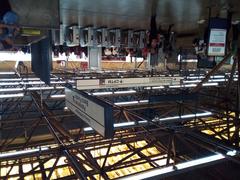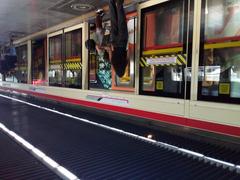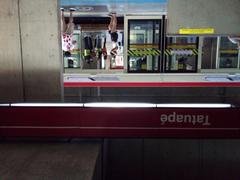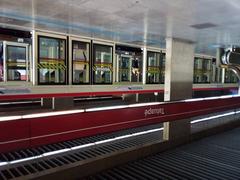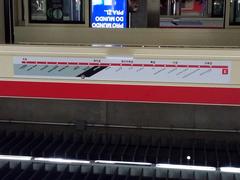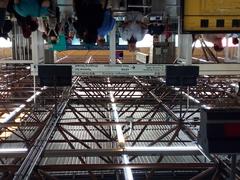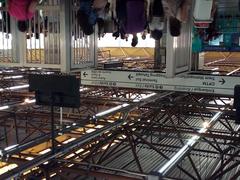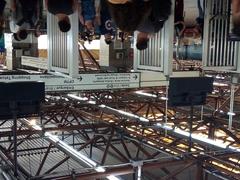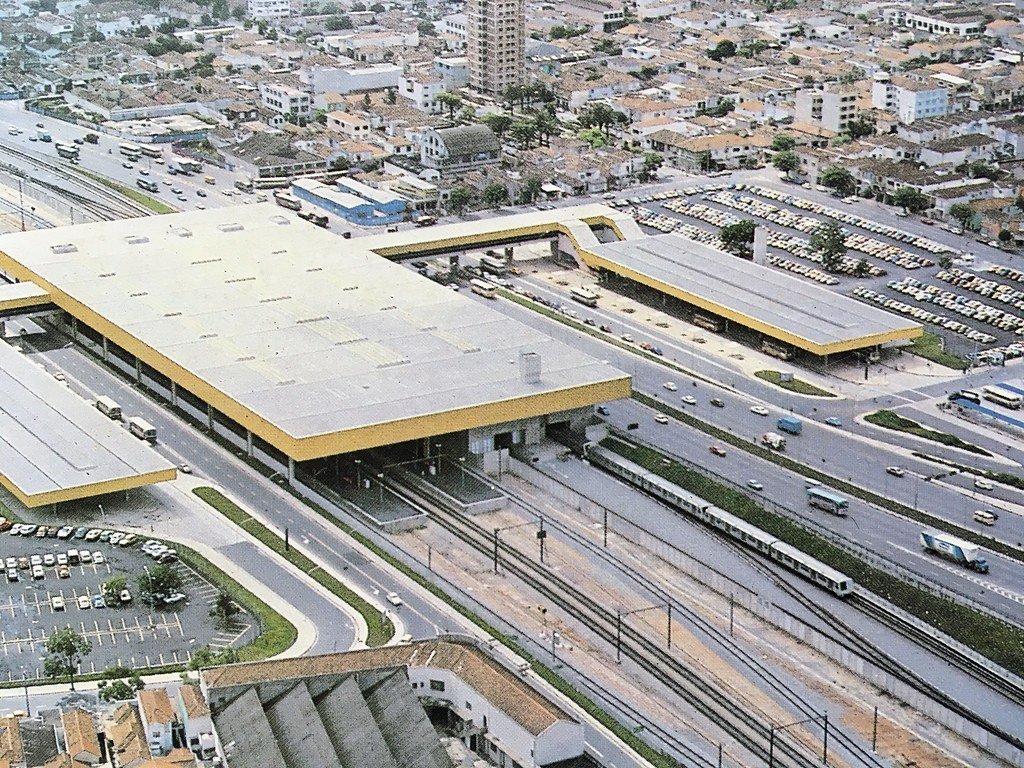
Visiting Tatuapé, São Paulo, Brazil: Guide to Tickets, Hours, and Attractions
Date: 15/06/2025
Introduction
Tatuapé, a dynamic neighborhood in São Paulo’s east zone, is a living mosaic of indigenous heritage, immigrant traditions, and contemporary urban flair. Named from the Tupi-Guarani for “path of the armadillo,” Tatuapé has evolved from a historical agricultural center into a vibrant hub for culture, recreation, shopping, and gastronomy. Its accessible location, diverse attractions, and rich event calendar make it an ideal destination for travelers seeking an authentic São Paulo experience.
Whether you are interested in exploring verdant parks, historic churches, bustling markets, or engaging with local festivals, Tatuapé offers a multifaceted journey through the past and present of Brazil’s largest city. This guide details everything you need to plan your visit—from opening hours and ticketing information to travel tips, accessibility, and highlights of must-see attractions.
For the latest updates and resources, consult official platforms such as the Igreja de São Judas Tadeu website, Anália Franco Park official site, and Corinthians Stadium tours page.
Historical Overview
Indigenous Roots and Etymology
Tatuapé’s earliest history is deeply intertwined with the Tupi and Guarani peoples, who gave the neighborhood its name and shaped its landscape through agriculture and settlement along the Tietê River. The term “Tatuapé,” meaning “path of the armadillo,” reflects both the local fauna and the area’s function as a natural passageway.
Colonial Beginnings and Early Agriculture
Following the Portuguese arrival in the 16th century, Tatuapé became a center for early Brazilian viticulture. Vineyards established as early as 1550 paved the way for future agricultural and economic development, especially with the influx of Italian immigrants in the 19th century who expanded wine production and modernized farming techniques.
Immigration and Urbanization in the 19th Century
Waves of European immigrants—mainly Italian, Spanish, and Portuguese—settled in Tatuapé, attracted by fertile land and proximity to São Paulo’s center. Their influence can still be seen in the district’s architecture, cuisine, and cultural traditions.
Industrialization and Urban Expansion (20th Century)
The 20th century brought rapid industrial growth, drawing workers from across Brazil and expanding Tatuapé’s population diversity with new Japanese and Polish communities. Infrastructure developments like the Radial Leste highway and railway split the district, shaping its north-south identity.
Deindustrialization and Gentrification
By the 1980s, deindustrialization led to the redevelopment of former factory sites, spurring a wave of gentrification. Southern Tatuapé emerged as a desirable residential area, boasting high HDI scores and luxury housing, while the north maintained its industrial and sporting character.
Contemporary Tatuapé: Culture, Recreation, and Community
Today, Tatuapé is known for its blend of historic charm and modern conveniences. It features luxury condominiums, reputable hotels, expansive parks, and a thriving commercial scene.
Key Attractions & Visitor Information
Parks and Green Spaces
-
Parque do Piqueri
- Hours: Daily, 6:00 AM – 6:00 PM
- Admission: Free
- Facilities: Playgrounds, sports courts, jogging tracks, picnic areas, skate park, birdwatching
- Accessibility: Paved paths and accessible restrooms
- Official Info
-
Anália Franco Park
- Hours: Daily, 6:00 AM – 6:00 PM
- Admission: Free
- Highlight: Home to Latin America’s largest public swimming pool
- Accessibility: Wheelchair accessible
- Official Site
Shopping and Entertainment
-
Shopping Anália Franco
- Hours: Mon-Sat, 10:00 AM – 10:00 PM; Sun, 11:00 AM – 10:00 PM
- Official Site
-
Shopping Metrô Tatuapé & Shopping Boulevard Tatuapé
- Hours: Mon-Sat, 10:00 AM – 10:00 PM; Sun, 11:00 AM – 9:00 PM
- Accessibility: Fully accessible
- Location: Av. Salim Farah Maluf, 3000
Historical and Cultural Sites
-
Igreja de São Judas Tadeu
- Hours: Daily, 7:00 AM – 8:00 PM
- Admission: Free; donations welcome
- Guided Tours: Weekends at 10:00 AM and 3:00 PM (Book here)
- Accessibility: Ramps, accessible restrooms
- Special Event: Festa de São Judas Tadeu every October
-
Casa de Cultura do Tatuapé
- Hours: Tue–Sun, 9:00 AM – 6:00 PM
- Admission: Free; guided tours by request
- Official Website
-
Teatro Eva Wilma
- Shows: Evenings, Tues–Sat
- Tickets: Online/box office
- Official Website
Sports and Events
- Parque São Jorge (Corinthians Stadium)
- Tours: Select days, R$20–R$40
- Book tickets
Markets and Gastronomy
-
Mercado Municipal do Tatuapé
- Hours: Mon–Sat, 6:00 AM – 6:00 PM
- Offerings: Fresh produce, meats, cheeses, traditional snacks
-
Bars & Restaurants
- Concentrated along Rua Itapura and Rua Serra de Bragança
- Wide selection including Italian cantinas, Japanese, Middle Eastern, and Brazilian fusion
Accessibility
- Most attractions, parks, and malls feature ramps, elevators, and accessible restrooms.
- The Tatuapé Metro Station (Line 3 – Red) connects visitors to the city center and Guarulhos International Airport.
- Bike lanes and pedestrian-friendly streets enhance mobility.
Travel Tips and Best Times to Visit
- Best Seasons: Spring and fall for mild, pleasant weather.
- Crowd Levels: Visit parks and malls on weekdays for a quieter experience.
- Safety: Tatuapé is considered safe, but standard urban precautions are recommended.
- Language: Portuguese is predominant; some English spoken in tourist areas.
- Payment: Cards widely accepted; carry some cash for small vendors.
Special Events and Guided Tours
- Festa de São Judas Tadeu: October, with music, food, and processions.
- Festas Juninas: June, celebrating Brazilian rural traditions.
- Guided walking tours: Focus on history, street art, and gastronomy. Check local tourism websites for schedules.
Photographic Spots
- Anália Franco Park lake and gardens
- Igreja de São Judas Tadeu, especially at sunset
- Rua Tatuapé’s architecture and murals
- Piqueri Park’s scenic landscapes
Demographics and Social Fabric
Tatuapé’s population is a multicultural blend of Italian, Spanish, Portuguese, Japanese, and Polish descendants. It features a high Human Development Index and a life expectancy of approximately 80 years, with a strong sense of community and active neighborhood associations.
Frequently Asked Questions (FAQs)
Q: Are Tatuapé’s parks and attractions free to enter?
A: Most parks and public spaces are free. Some guided tours and special events require tickets.
Q: How do I get to Tatuapé from downtown São Paulo?
A: Take Metro Line 3 (Red) to Tatuapé Station.
Q: Are the main attractions accessible for people with disabilities?
A: Yes, most parks, malls, and cultural centers offer accessible facilities.
Q: Can I attend a football match or stadium tour?
A: Yes, visit the Corinthians Stadium website for tour tickets and schedules.
Q: When is the best time to visit for cultural events?
A: June (festas juninas) and October (Festa de São Judas Tadeu) are especially lively.
Call to Action
Ready to explore Tatuapé’s blend of history, culture, and modern living?
Download the Audiala app for interactive maps, guided tours, and up-to-date visitor information.
Follow Audiala on social media for the latest events, travel tips, and exclusive offers.
External Links
- Anália Franco Park Official Site
- Corinthians Stadium Tours
- Shopping Anália Franco
- Casa de Cultura do Tatuapé
- Teatro Eva Wilma
- São Paulo Metro Red Line
- Tatuapé Neighborhood Guide
- Parque Ceret Information
References
- Anália Franco Park Official Site
- Igreja de São Judas Tadeu
- Casa de Cultura do Tatuapé
- São Paulo Info: Tatuapé
- Corinthians Stadium Tours
Tatuapé is a destination where São Paulo’s history and modernity meet, offering unforgettable experiences for every traveler. Plan your visit today and immerse yourself in one of the city’s most charismatic neighborhoods.

